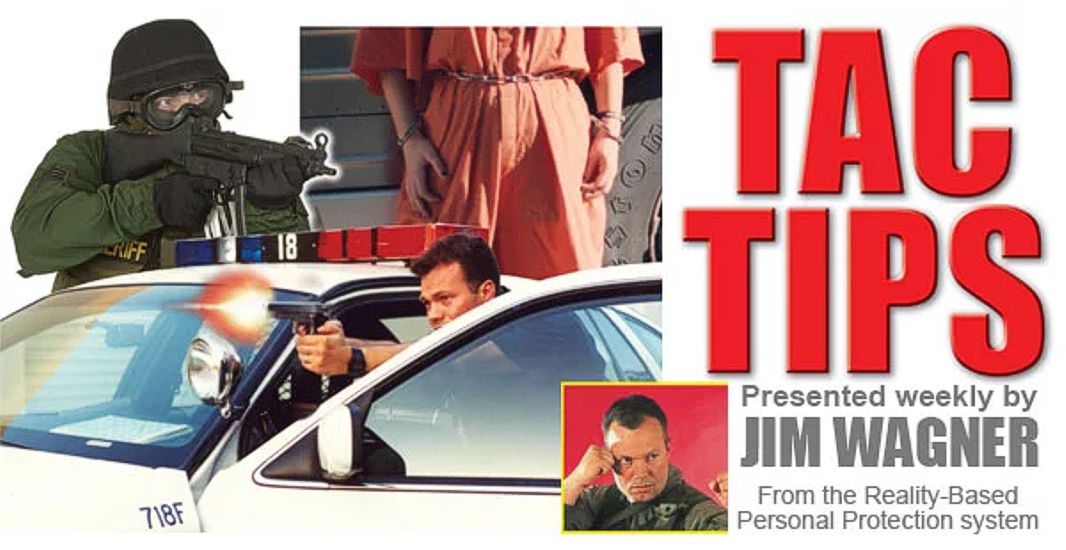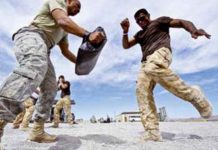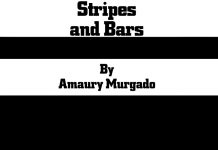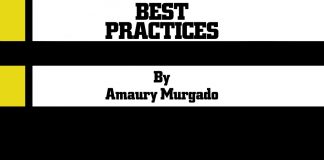If you are a police officer or security guard driving around on patrol at night and suddenly a bullet goes through your front windshield, you know from your training that you need to duck down as low as you can using the dashboard as a shield to avoid other incoming rounds and drive the car out of the kill zone. Unfortunately, you may end up blind and if you can’t see you can’t fight. If you are not wearing proper eye protection shards of glass, also known as “spalling” may shower your eyes even if the lead fails to hit you.
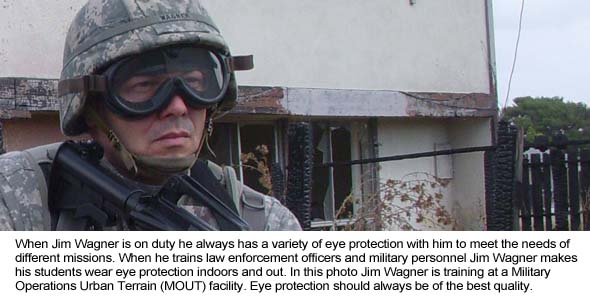
In the 1990s my instructors of the 1st Marine Division Scout Sniper School taught me all about the dangers of spalling, and even how to use it against the enemy in certain tactical situations. I took the lessons to heart and I always wore wear anti-ballistic, wrap-around, eye protection when on out on police patrol. Back in 2001 when I was a patrol supervisor my new partner thought I was wearing prescription glasses because they were clear and we were inside a building. I explained to, as a mentoring opportunity, that if we got into a firefight and were close to one of the cinder block walls that the bullets impacting the wall would break off small fragments and send them flying downrange at the same speed as the bullets striking the wall. I convinced her to buy her own eye protection: anti-ballistic sunglasses for sunny days and clear for hours of darkness or when inside buildings.
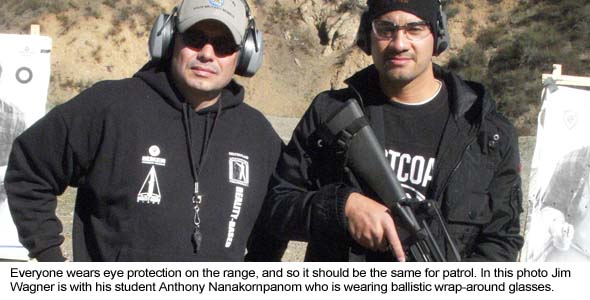
Have you ever noticed the photos of American soldiers in Iraq or Afghanistan on combat patrol? They all have on eye protection. The laws of physics are unchangeable, and flying debris coming towards the face needs to be stopped or penetration of skin and eyeballs is the unfortunate consequence. I saw a woman once who had windshield glass pass over her right eye, and the aftermath was not a very pretty sight. Her eyeball, what was left of it, looked like a deflated balloon hanging down on her cheek with pink-like foam over it. She was in agony. For me personally that reinforced the need to wear eye protection, even in a vehicle.
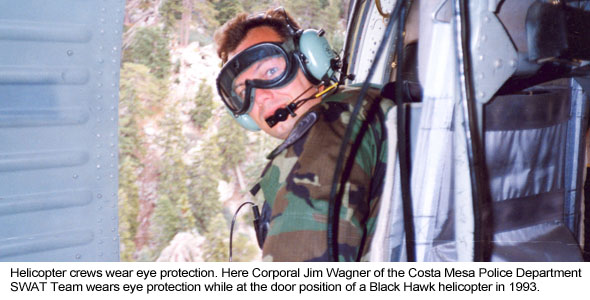
Today, as a Reserve military police soldier, I am tasked with typical military police duties on my base when I am not instructing or in a course myself. As such, I always have my two sets of protective eye wear when doing real-world missions.
If you follow my advice some colleagues may poke fun at you for wearing eye protection indoors or at night in your patrol vehicle, but these type of mockers were also making fun of those years ago who carried ballistic helmets with them in their go bags for high risk calls. It was okay to wear body armor, but apparently not head protection. Before that, back in the 1980s many “professionals” used to be against ballistic vests when they first came out. There will always be those who take chances with their safety or come around only after learning the hard way.


